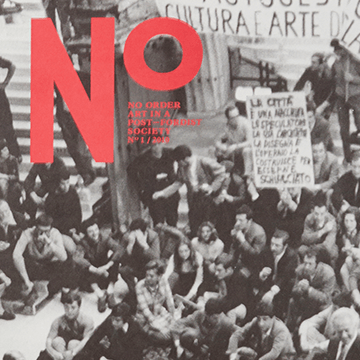An Ongoing-Offcoming Tale comprises abstractions, subversions and poetic ruminations, housed within essays that engage with the lives and practices of over 30 artists. It opens with the question: If only some leaves could speak? And in the journey that follows, we encounter many such possibilities – that leave us asking questions of the boundaries we place around the things we are allowed to think, the knowledge we call knowledge, and the questions we permit ourselves to ask.
Tag: Essays
Momentography of a failure
Momentography of a failure [Addis Ababa] brings essays, timelines, film, photography, and a series of conversations together to deal with Ethiopia’s controversial urbanisation and the transformative space of the city. It explores the gradual transition of rural-urban space, inner-city migration, emerging and disappearing spaces, and commoning in public space.
PERVERSE DECOLONIZATION?
New nationalisms, toxic patriotisms and systems of exclusion have been on the rise for the last decade, reinforced by technology and rooted in colonialism, slavery and class oppression. Our time offers a unique twist on these age-old structures: rhetorics of decolonization are now weaponized by autocratic regimes, just as they are normalized in the phantasmagoria of cultural practices.
PERVERSE DECOLONIZATION?
Neue Nationalismen, toxische Patriotismen und Ausgrenzungssysteme sind auf dem Vormarsch, verstärkt durch Technologien und verwurzelt in Kolonialismus, Sklaverei und Klassismus. Unsere Gegenwart stellt eine einzigartige Verdrehung dieser uralten Strukturen dar. Die Rhetorik der Dekolonisierung wird heute von autokratischen Regimen missbraucht und durch immer gespenstischere kulturelle Praktiken normalisiert.
Electric Brine
Flowing, seeping, leaking, cascading, shaping, Electric Brine is a volume of poetry and critical essays by women voices from diverse fields such as literature, geography, media studies, history of life sciences, sociology, and poetics of science and fiction, each of them central to the independent curatorial research entity The World in Which We Occur (TWWWO, 2014-ongoing) and its associated online study group Matter in Flux.
Stronger Than Bone
Stronger than Bone draws upon the embodied strength, intuitive desires, and collective wisdom of feminists and non-binary protagonists to foreground the manifold dimensions of feminist politics and commitments. Written by thinkers and allies across generations with a focus on heterogeneity, intersectionality, and influence across geographies, this reader arrives into the world at a moment of heightened fragility, under the shadow of the coronavirus pandemic.
Why Call it Labor?
Why Call It Labor? comprises four essays and one conversation with contemporary artists and curators discussing their experience of becoming mothers as professionals in the arts, its reality and effects. While their reflections represent a similar strata of art worker in terms of background, class, and career trajectory, the impact of instruments of patriarchy on rendering maternity invisible that they describe is recognizable and insidious.
Transition to Nowhere
Today, after Post-Communism has ended in chaos and confusion, we are entitled to ask: was it a condition, or a transition; a rise or a decline; progression, regression or simply a time-lag? Has it ever shaped its own form of social being, a unique mode of economic production, a politics of its own, a culture? Or was it just another interregnum of history, full of morbid symptoms we cannot get rid of?
In a While or Two We Will Find the Tone
Bonaventure Soh Bejeng Ndikung’s expanded curatorial practice delineates the space of exhibition making as a space of critical thinking and of experimentation. By proximity, the texts in this anthology, echo each other, resonate with each other, interfere with each other, and present perspectives on the political, poetic, and philosophical potentials of exhibition making, beyond the tight corset of the discipline itself.
Streams of Consciousness. Catalogue
The moment of a snapshot could be an extended moment of capturing the stream of consciousness. The moment something catches the attention of the photographer, the many associations that are made conceptually and aesthetically, the many references that are invoked and situations convoked lead to the shot. Thinking is as much an active as a passive process, and what becomes important is how that which is seen, heard, smelled, felt, tasted or perceived in another way triggers the inner eye to see or inner voice to utter thereby setting this stream of consciousness in motion.
Streams of Consciousness. Reader
Conceived for the 12th Edition of the Bamako Encounters this book captures thoughts and responses of writers, poets, and artists to the curators’ proposition to think the practice of photography in Africa and its diaspora through the notion of the “stream of consciousness.”
The moment of capturing an image can be understood as a solidifying of the streams of consciousness which occur in the photographer’s mind in that decisive moment: the photograph then becomes the place of convergence of all conceptual, aesthetic and cultural ideas and associations out of which the impetus to capture arose.
Nobody Knows, When it Was Made and Why
The publication takes a fresh look at Aby Warburg’s prominent Mnemosyne Atlas. Reflecting on the fact that research, be it art or science based, is a historical and anthropological procedure that is closely related to colonialism, the film and the two essays rethink how Warburg creates a relational and trans-cultural methodology. Inhuman and animating forces of images, things, animals, people, minerals, amulets and dices, solar and lunar eclipses, intestines, magic stones and starry heavens stemming from Iran, Iraq, Syria and Jordan suggest exploring Mnemosyne Atlas outside of European cultural history and the imagination of itself.
No Order
No Order editorial research focuses on the relationships between contemporary art systems and capitalism’s production processes. By means of an investigation into current creative industries – and their social, economic and semiotic assemblages – the contributions (essays, interviews and dialogues as well as artists’ projects) aim to deconstruct, analyse and intervene within the ambit of the procedures and forms of cognitive capitalism. It concentrates, in particular, on the phenomena of the ‘biennalisation’, ‘financialisation’ and ‘spectacularisation’ of the political, beginning with the control and distribution of forms of artistic education, production and display on a global scale.












